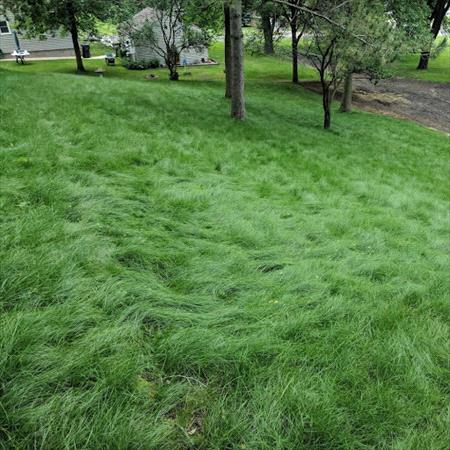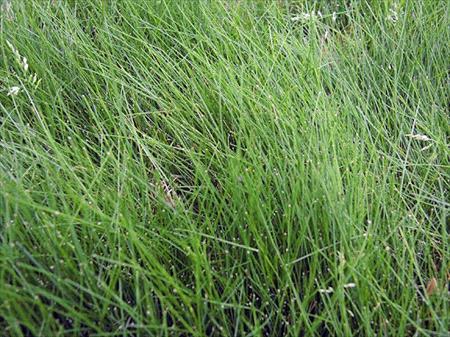Your Cart

Learn Your Lawn: Fine Fescue
Request a Quote
Fine Fescue is a group of cool-season grasses that are known for their fine leaf texture and shade tolerance. They are often used for turf, ground cover, and erosion control. Varieties of Fine Fescue include Creeping Red Fescue, Chewings Fescue, Sheep Fescue, and Hard Fescue. They are typically low maintenance and can survive in poor soil conditions, so they are often blended with other turf grass varieties, like Kentucky Bluegrass, to improve aesthetics and to create a diverse, hardy lawn that will thrive in areas where it is generally difficult to establish grass. Fine Fescue grasses are well adapted to acidic, infertile soils, and low maintenance sites, such as shade, rocky outcrops, and low-water-use landscapes. They are not well suited for high-traffic areas and may go dormant during hot, dry weather. It’s important to keep a proper balance of grass species in your lawn, because an excess of Fine Fescue creates a greater likelihood of leaf diseases, such as Red Thread or Leaf Blight. A thick, healthy, well-maintained lawn is always the best line of defense. This can be achieved through beneficial cultural practices, which include: Watering: Deep and infrequent watering is essential for strong plant health and development. A general rule of thumb is to water each area of your lawn for 30-45 minutes, twice per week, in the early morning so the turf is dry by nightfall. Mowing: Maintain a regular mowing schedule throughout the growing season. In general, you should keep your lawn between 2 ½ and 3 ½ inches high, but during the hottest weeks of summer, you may allow the grass to grow as high as 4 inches. Never remove more than ⅓ of the grass blade at each mowing. Fertilizing: Regular applications of Weed Man’s specially formulated, slow-release granular fertilizer will help provide your lawn with adequate nutrients. These applications are timed specifically to avoid over fertilizing the lawn. Core Aeration and Overseeding: Aerate and overseed annually to fill in bare areas with suitable seed and topsoil and to choke out unwanted grasses and weeds. This will help thicken the turf, so weeds can’t break through, and will improve soil drainage and alleviate soil compaction, allowing water and nutrients to penetrate deeper into the soil. Your local Weed Man professional will be able to offer other solutions and recommend the best form of treatment that is suitable to improve the conditions of your lawn.What is Fine Fescue Grass?
How Can I Control The Amount Of Fine Fescue Grass In My Lawn?
 English (USA)
English (USA) Français (CANADA)
Français (CANADA)

